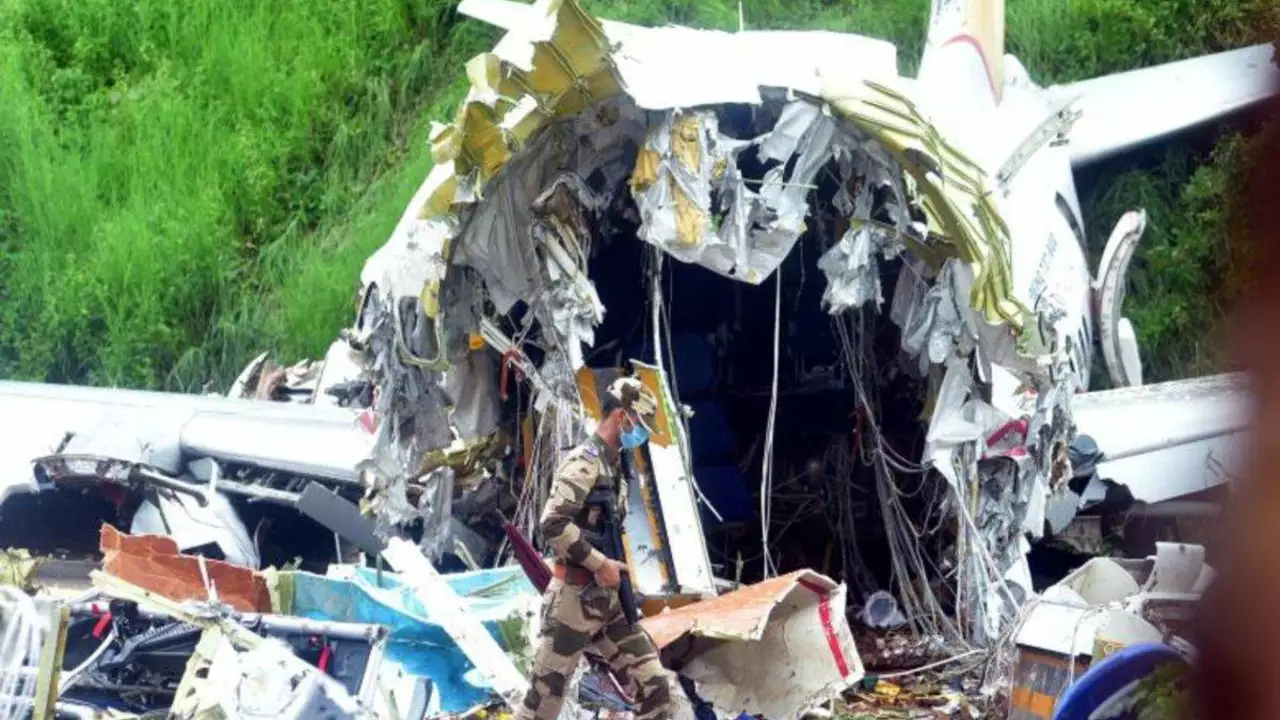The Air India Express Flight IX 1344 Tragedy
The shattering accident of Air India Express Flight IX 1344 on August 2, 2023, is an unfortunate event that has left us all in dismay. The Boeing 737, carrying 190 passengers from Dubai, overran the runway at Calicut Airport in Kerala, India, leading to a catastrophic crash. The purpose of this article is not to point blame or expedite judgment, but to dissect the potential causes behind the tragedy in order to avoid such instances in the future.
A look into The Crash Site: Calicut Airport
Calicut Airport, also known as Kozhikode International Airport, where the aircraft met its tragic end, is known for its "table-top" runway. Now, you might be wondering, Arvind, what on earth is that? Well, a table-top runway, my friends, is one that is constructed on hilly or elevated terrain, much like a table in the air. Startling as it may sound, landing on these runways bears significant risks for pilots due to sudden drops right at the end of the runway. In the case of our ill-fated Flight IX 1344, the aircraft overshot the runway and slid down into the valley, breaking into two and costing many lives.
Calicut Airport has been a concern for airlines and pilots alike for a long time. Back in July 2019, a safety audit of the airport by the Directorate General of Civil Aviation (DGCA), had flagged necessary improvements, but these appear not to have been fully implemented. Such negligence makes you question the efficacy of such audits. Every aspect of this accident cries out for a comprehensive review of how safety regulations are enforced at our airports.
The Dreadful Weather Factor
The flight, trying to find an opening in the monsoon cloud cover and hit the ground running, had another enemy to combat besides the table-top runway - the heavy monsoon downpour. Adverse weather conditions, in the form of pelting rains and poor visibility, meant the pilots were wrestling not just with ground factors, but also those in the air. It felt like life playing a cruel game of pin-the-tail-on-the-donkey in pitch-black darkness.
I still remember this one time in 2015 when I was flying back to Delhi from Cochin, also a city marked by tricky monsoons. There were a few moments of turbulence that rattled my insides worse than the spiciest samosas I've ever had! Nothing compared to what the passengers aboard IX 1344 must have experienced, but it's a testament to how the weather can turn flights into rollercoaster rides.
Investigating Human Error
While weather conditions and the tricky terrain surely posed a stiff challenge, human error can't be ruled out either. Early reports suggest that the plane attempted landing twice, the second one being fatal. The question is, should the pilot have tried to land the second time given the adverse conditions, or opted for a diversion to another airport?
Now, as an armchair critic, it's easy for me to say, "Arvind would've done things differently." But the reality is, pilots are trained professionals who make split-second decisions under stress that common folks like us can't even begin to comprehend. Heck, I still struggle with deciding my dinner menu! Jokes aside, the investigation authorities will be meticulously examining the conversation between the cockpit and air traffic control to piece together the decision-making sequence that preceded the disaster.
Unpacking The Aircraft Condition
Last but certainly not least, we must talk about the Boeing 737-800 itself, the fallen steed in this tragedy. This particular model was nearly 14 years old and part of Air India's budget service, Air India Express. This brings us to the unavoidable question, was the aircraft itself a contributing factor to the accident?
And let me be clear, by asking this, I am not suggesting Boeing tucks grenades in its planes' tail sections and hopes for the best. Air India has a fleet of over 30 of the same aircraft model, which have been rendering impeccable service over the years. However, routine maintenance and the aircraft's overall condition certainly play a crucial role in ensuring safety during turbulent flights and rough landings.
Now, the black box - the aircraft's flight data recorder and cockpit voice recorder, akin to the sacred scriptures of an aircraft accident - will provide crucial insights into how the aircraft was operating prior to the crash. Y'know, to me, it's like the medical checkup you dread but can't avoid, because, well, it's necessary to find any lurking issues.
In conclusion, the fatal crash of Air India Express Flight IX 1344 is a tragic example of how a combination of factors - challenging runway structure, adverse weather, potential human error, and aircraft condition - can culminate into catastrophic incidents. The accident is a grim reminder of the importance of stringent safety protocols, diligent audits, and constant learning in aviation. My heart goes out to the victims and their families, and I want to express the deepest respect for the rescuers and investigators working round the clock to salvage what they can from this tragedy.
